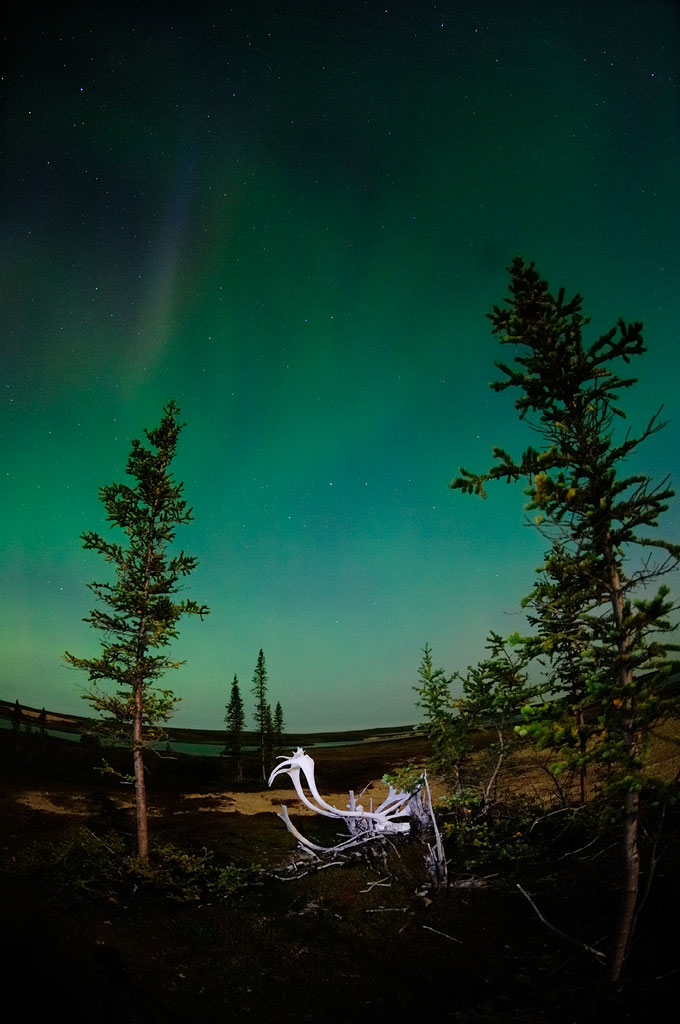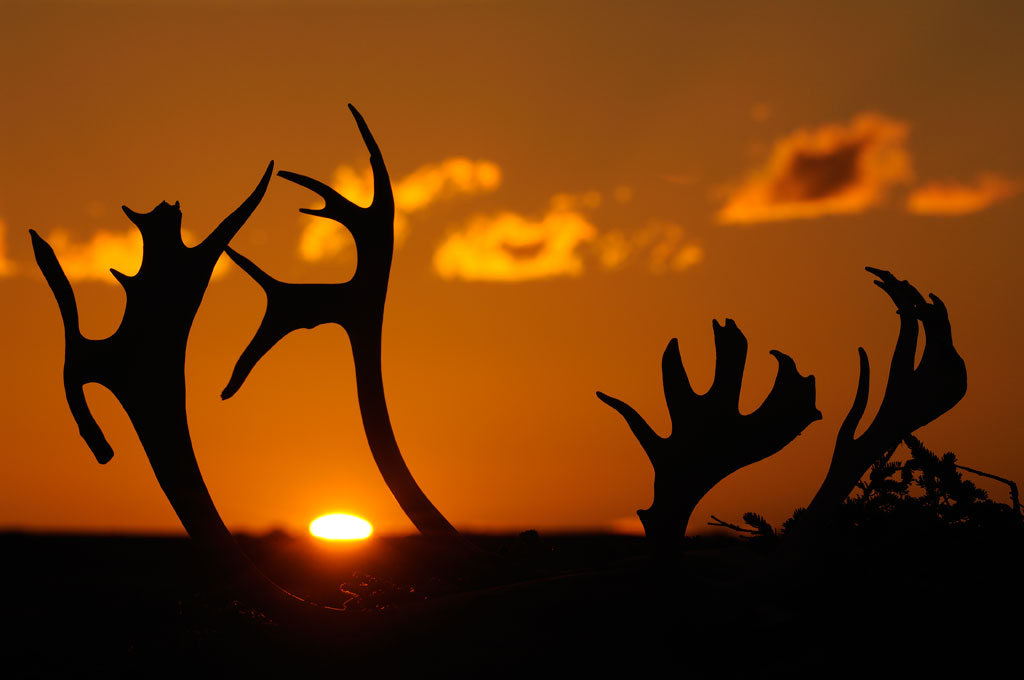
|

|

|

|

|

|

$220 SAVE $130 = 37.0% Western Digital 16.0TB Western Digital Ultrastar DC HC550 3.5-in… in Storage: Hard Drives
|

|

|

|

|
Traveling to the Thelon Wildnerness
If you love wild, unspoiled places as I do, then you’ll want to put the Thelon Wilderness down on your “must-visit” list. The beauty of the Thelon is more subtle than that of Yosemite or the Grand Canyon, but it has its own quietness and cleanliness that can’t be felt in the lower 48 United States.
To get to the Thelon, the first leg of your journey will be by commercial airline to Yellowknife, Canada. For being so far north, it is an unusually modern city—being the jump-off point for every diamond, uranium and gold mining company that exploits north-central Canada. Sadly, uranium has already been found not too far from the Thelon, and once the price of uranium skyrockets (as it inevitably will, having already quintupled in the past 2 years), the wilderness itself may be vulnerable. The flip side is that increased use of nuclear power might retard global warming, which is forever changing the far north—but that is likely to be too little, too late.
Yellowknife
Yellowknife derives its name from the knives the indigenous people fashioned out of native copper. Copper and gold were played out early in the 20th century in Yellowknife, but the mineral riches of northern Canada continue to sustain it—with the result that there are many large and modern buildings that might fit right into other cities without notice.
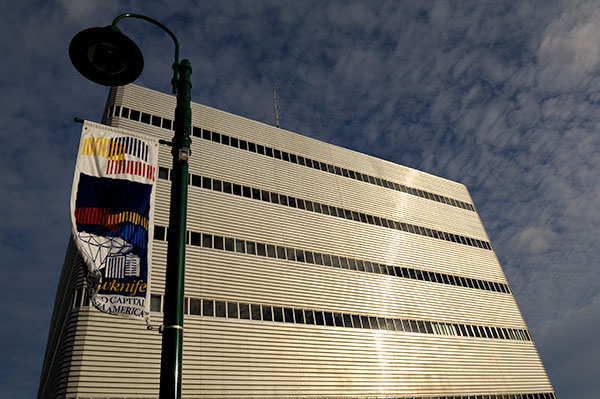
Yellowknife is variously called the “Diamond Capital of the World” or the “Northern Lights Capital of the World”. Indeed the Aurora Borealis is beautiful and wondrous that far north, and of more lasting beauty than small hard rocks that glint, whose laborious extraction scars the landscape for millennia.
Yellowknife is frequented by tourist groups, mostly Japanese, who come to see the spectacular displays of aurora borealis or Northern Lights. Some nights it is rather plain and hard to discern with the naked eye, but be forewarned if things become active, you’ll suddenly have blown your exposure by several stops. For the most part, color is difficult to see by naked eye, and a digital camera is the very best way to capture the display. A fisheye lens or extreme wide-angle is an excellent choice:
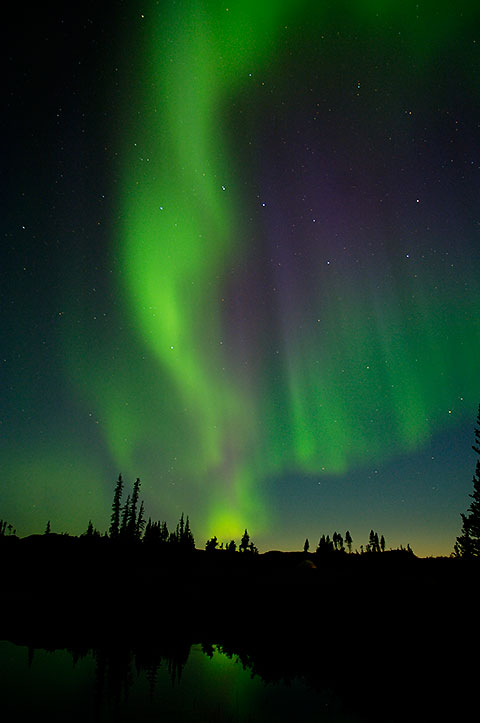
Aurora Borealis, Whitefish Lake near the Thelon Wilderness

Food in Yellowknife ranges from excellent to poor. I had both experiences, the unpalatable remains of the latter shown below.

The 2nd leg of the journey—Lutselke
It took us a full day to get into Yellowknife from California. The next day, the journey continued by flying to Lutselke (“Snowdrift”), aboard a 12-seater aircraft, a comparatively large plane for that neck of the woods.

During the summer, the land in that area is impassable except by airplane. From the air, the unimaginable destructive power wielded by vast sheets of ice becomes apparent—the land has been scraped nearly flat, with the non-conforming potholes forming natural basins for miles on end. Even the rock itself looks tortured and cracked—and indeed it should be as it forms part of the pre-Cambrian Shield, among the oldest rock on earth at 2.5-3 billion years old (roughly). It is a landscape sculpted by ice and filled by its melt-water, yet rainfall there is very modest. There are endless shapes and forms to explore visually, with sunlight glinting off lakes and swirling wind patterns drawn upon them.


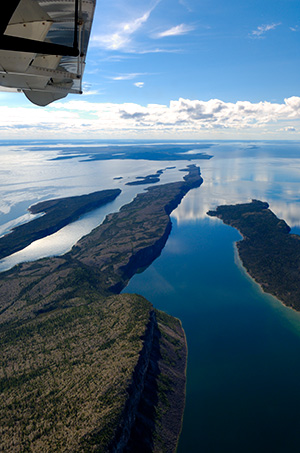


A friendly greeting, evocative of the land and its people, is found on the building:
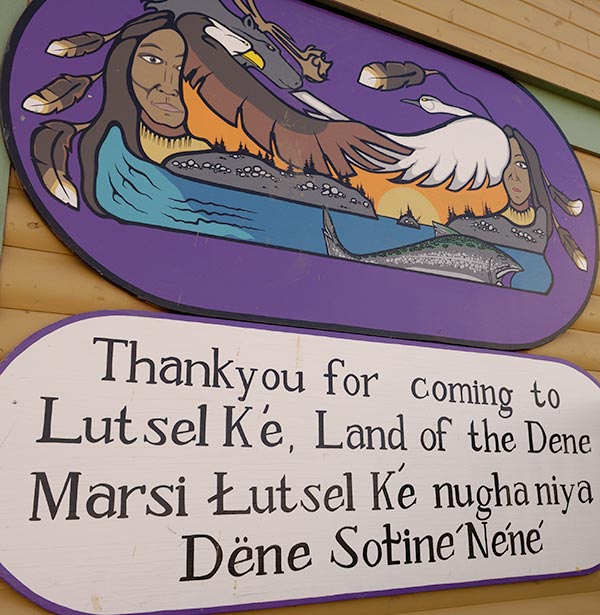
The wait for our ride to the dock in Lutselke wasn’t so bad, once we discovered delicious wild raspberries quite close to the building, though after eating our fill we were told that the most prolific bushes grew where uncomfortable travelers made themselves more comfortable (during the winter, we hoped). The black flies, at this point, were yet of minor concern. Thought it was uncharacteristically warm for this far north, perhaps 75° F, we assumed temperatures would drop later—essential for fall colors. No matter, our ride to the dock was enjoyable nonetheless, even in this “dry” town.

The lifeline to Whitefish Lake is seen below. The plane could shuttle people and luggage about four at a time (there being 12 of us); this was to take the better part of the day. Aside from an incident involving a quantity of spilled diesel fuel and a cigarette, refueling was uneventful (the fuel did not ignite). Note to self: avoid getting slippery diesel fuel on soles of shoes, and definitely avoid contact with one’s hands.
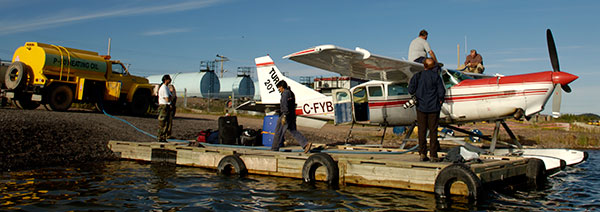
The women went first of course, leaving some of us to explore Lutselke for a few hours. We took advantage of the time for an excursion of a few miles around the island. The view from the highest point on the peninsula wasn’t bad; an uninteresting shot in color, but somewhat more interesting in infrared:
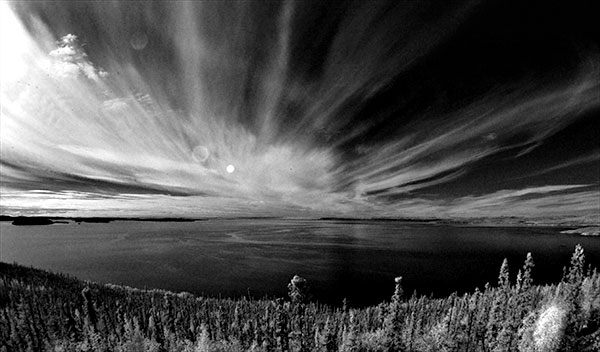
Your author returned from the side-trip via motorboat. The freshness of the air and water must be felt and smelled to be believed.
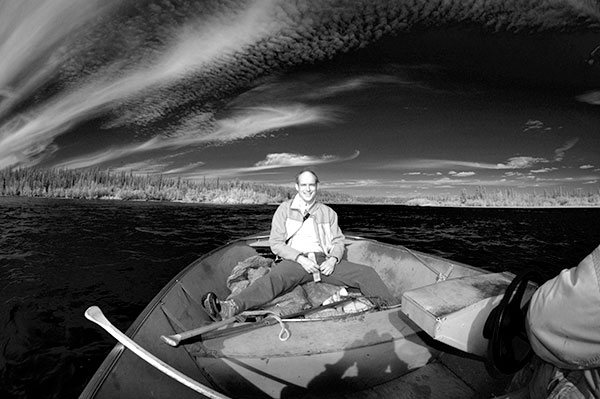
Below is the settlement of Lutselke, as the motorboat headed back to the dock for departure to Whitefish Lake:

The 3rd and final leg of the journey to Whitefish Lake
Finally, our turn came. The flight to Whitefish Lake was even more beautiful than to Lutselke, being dotted with lakes and strewn with eskers occasionally. While the vast ice sheets were melting, enormous underground rivers amassed huge amounts of sand hundreds of feet high—eskers. These landforms offer vital habitat in the midst of the barrens, which are flat, featureless expanses of nothingness covered with huge quantities of lichen (the caribou’s main source of nutrition), and in some places blueberries and other dwarf plants. They do in fact look barren from the air, but are their own beautiful miniature forest.
The barrens are not suitable for the rearing of wolf pups or bear cubs or fox kits, because no dens can be dug in the hard permafrost or rock, but the eskers offer easily-dug sand, and so form a part of the ecosystem vital to the survival of many species. The eskers also defy the northern tree-line (which lies hundreds of miles further south), sheltering substantial-sized trees. Many eskers have substantial ponds or small lakes, but sadly many of them are draining steadily as the permafrost melts, with drops of as much as 30 feet in just the past two decades.
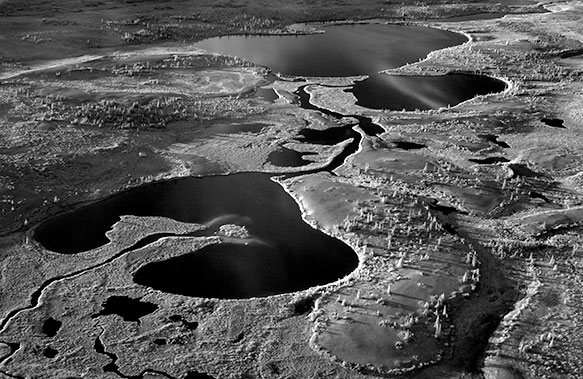
We finally pulled into camp late in the day, glad to be there after two days of travel from California. The black flies waited expectantly, for fresh blood had arrived. The picture below shows the camp at Whitefish lake, which is situated near a very large esker. In those parts, it is quite a luxurious abode (actually the only one!). The large tent was not ready for occupancy; each of the smaller quonset huts was divided into two halves, and two people occupied each half.

The only way in or out is by plane. Aircraft fuel this far north, if you can find a seller (extremely unlikely), costs upwards of C$25/gallon, according to our pilot, Tundra Tom.
Sunsets in the far north linger quite some time before, followed by sunrise in a quite-unexpected direction—very confusing behavior to those accustomed to more southerly climes.
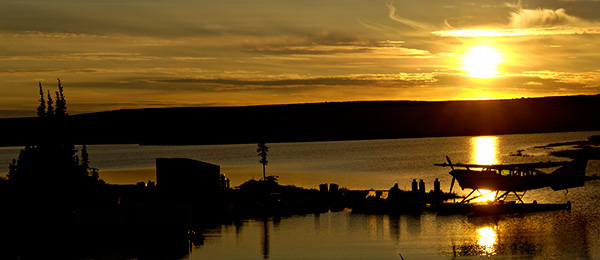
Seagate 22TB IronWolf Pro 7200 rpm SATA III 3.5" Internal NAS HDD (CMR)
SAVE $100

















